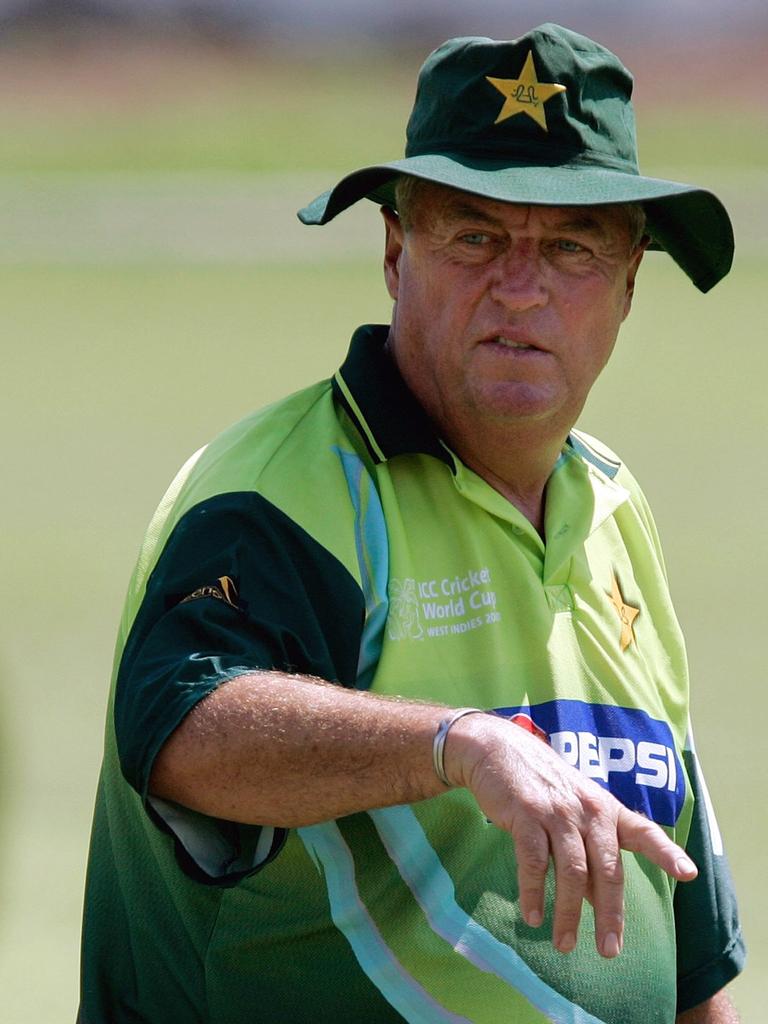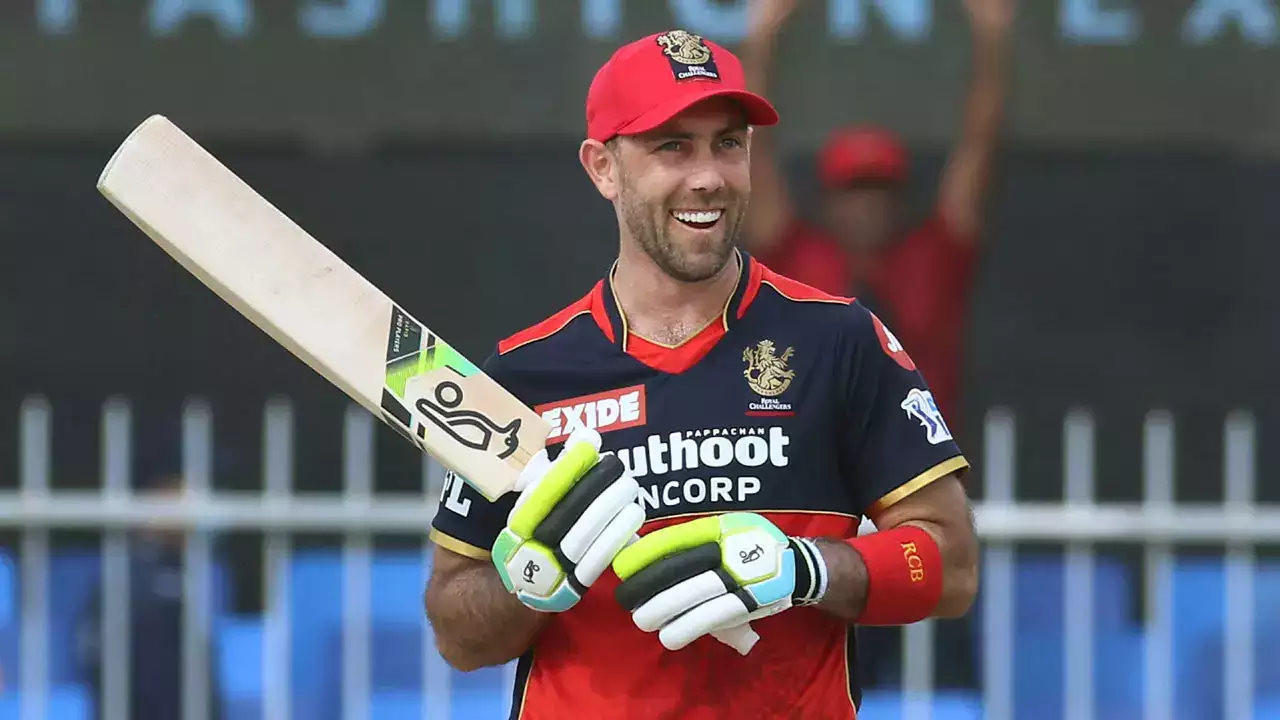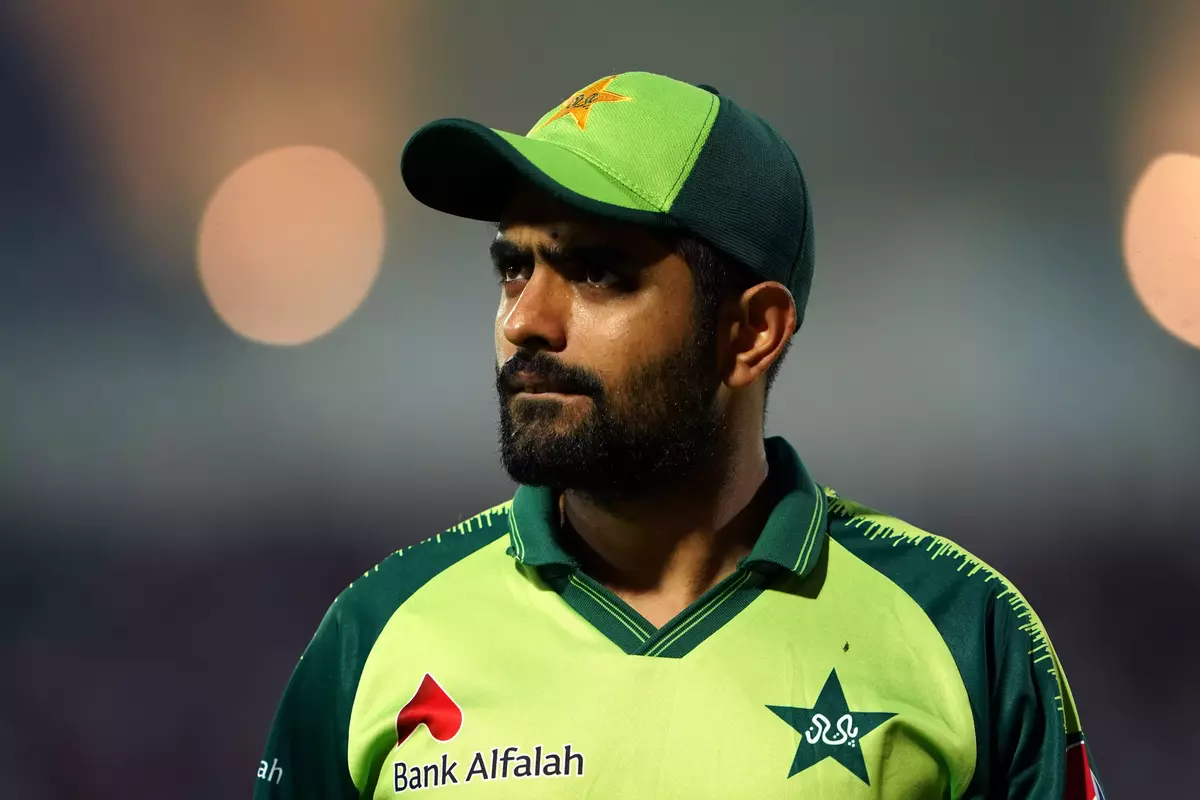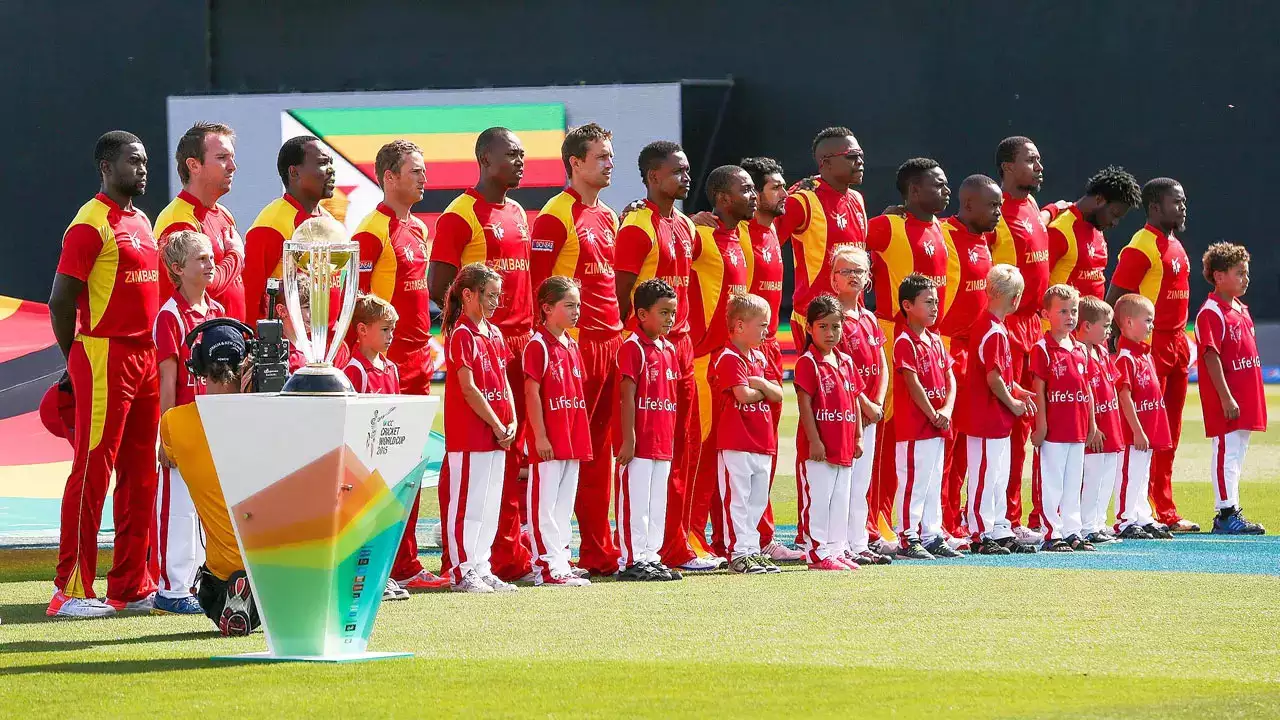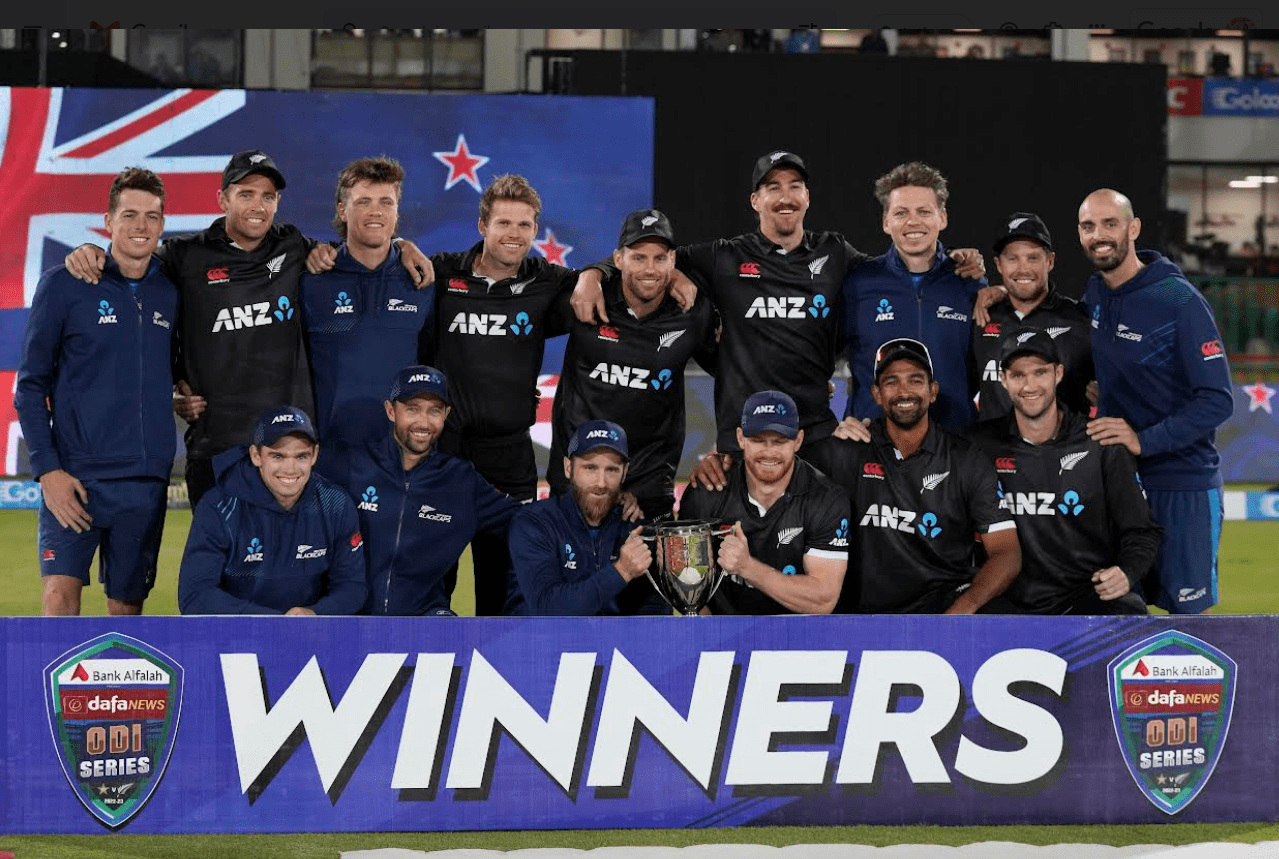The tale of Bob Woolmer’s life and career is a compelling journey through cricket’s highs and lows, from his early days in India to his mysterious demise in Jamaica.
As a player, coach, and innovator, Woolmer left an indelible mark on the sport, blending traditional techniques with modern technology to shape the future of cricket.
His story intertwines personal achievements, professional controversies, and a tragic end, illustrating the complexities of a life devoted to cricket.
This account offers an insight into Woolmer’s multifaceted contributions, from his playing days with Kent and England to his pioneering coaching stints in South Africa and Pakistan.
It also delves into the puzzling circumstances surrounding his untimely death, which remains a subject of speculation and intrigue.
Key Takeaways
- Early Talent: Born in India, Woolmer's cricketing journey began under his father's influence, showcasing early signs of greatness.
- Versatile Player: Transitioning from an off-spinner to a medium pace bowler, Woolmer's adaptability was evident from a young age.
- Innovative Coach: His coaching career was distinguished by the introduction of technology and new techniques to cricket.
- Strategic Genius: Woolmer's strategies revitalized teams like South Africa and Pakistan, leading them to notable successes.
- Mysterious Death: Found dead in 2007, the circumstances of his demise sparked widespread speculation and investigation.
- Legacy in Coaching: Woolmer is remembered for his forward-thinking approach, significantly influencing modern cricket coaching.
- Contributions Recognized: Posthumously honored with awards and commemorations, his impact on cricket is widely acknowledged.
- Controversial Views: His stance on issues like ball-tampering brought him into the spotlight, reflecting his progressive thinking.
- Global Influence: Woolmer's coaching philosophies extended beyond borders, influencing cricket globally.
- Enduring Mystery: Despite the conclusion of natural causes, the mystery surrounding Woolmer's death continues to provoke discussion.
Bob Woolmer’s Early Life: A Star Is Born
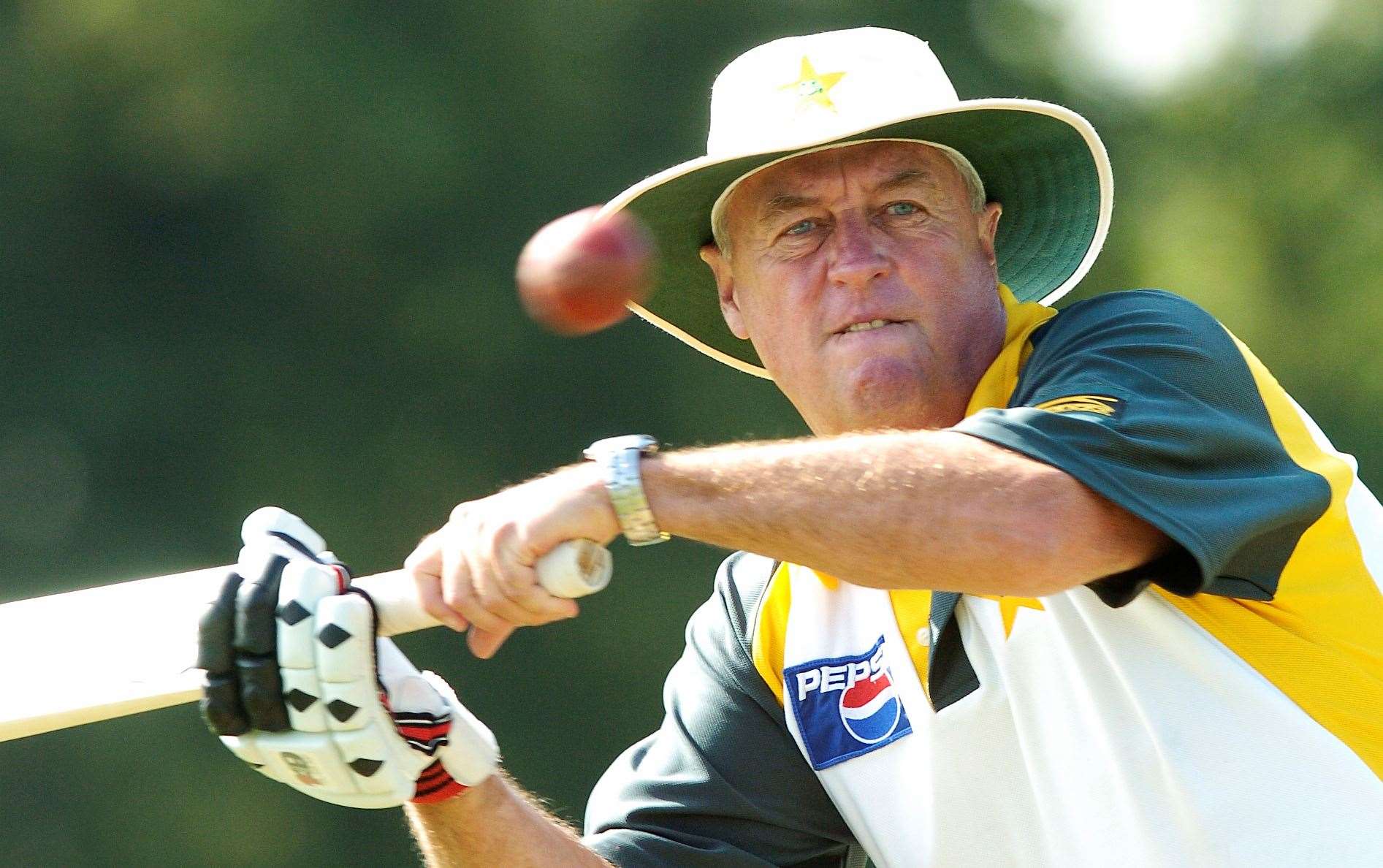
On 14 May 1948, Bob Woolmer entered the world at Georgina McRobert Memorial Hospital, located just a stone’s throw from Green Park Stadium in Kanpur, India. His father, Clarence Woolmer, shone as a cricketer for United Provinces in the Ranji Trophy.
By age 10, Bob had the thrill of watching Hanif Mohammad set a breathtaking record with a score of 499 in first-class cricket.
Decades later, as Warwickshire’s coach, he proudly observed Brian Lara surpass this feat with a score of 501 not out.
School Days and A Change of Pace
Initially, Bob’s education journey took him to Yardley Court in Tonbridge, followed by The Skinners’ School in Royal Tunbridge Wells.
At 15, Colin Page transformed him from an off-spinner into a medium pace bowler, showing early signs of his versatile talent.
Early Strides in Cricket
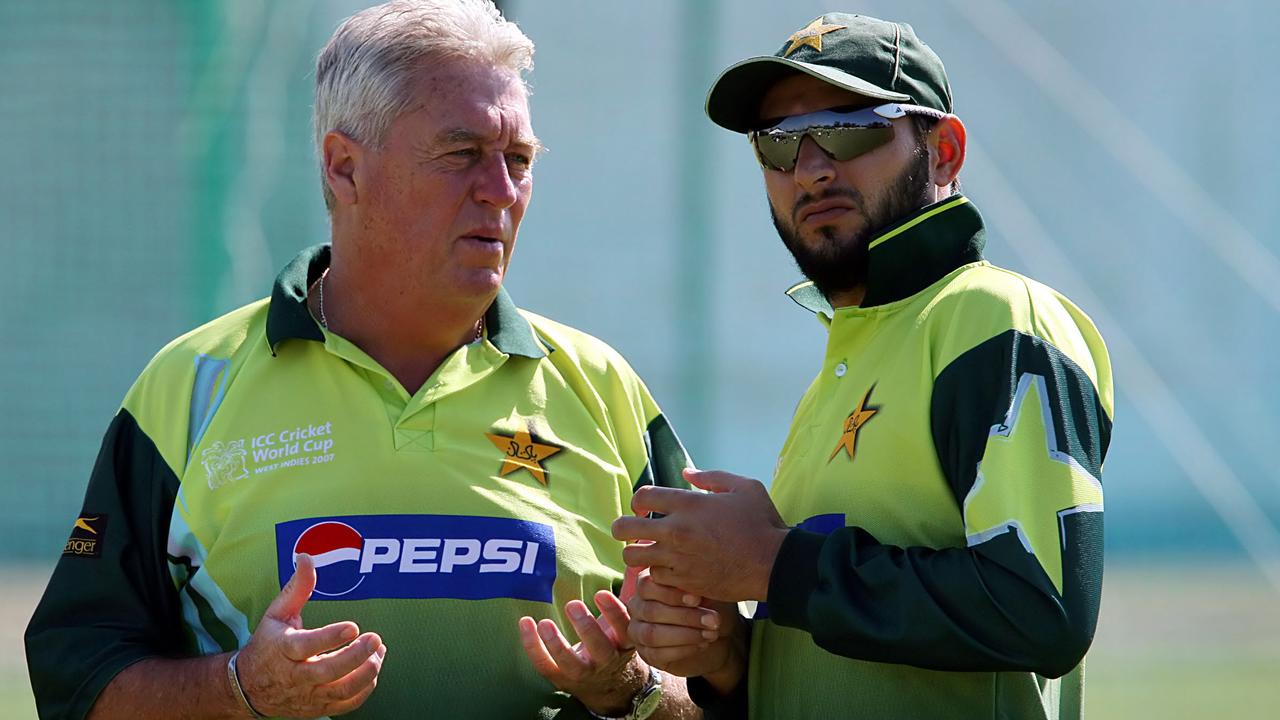
Bob Woolmer’s professional journey kicked off as an ICI sales representative. Simultaneously, his cricket career gained momentum with Tunbridge Wells Cricket Club and Kent’s second XI.
In 1967, he broke records with 13 consecutive strikes in bat and trap, showcasing his burgeoning skills on the field.
At 20, Bob Woolmer made waves, joining Kent’s cricket team in 1968. His debut match against Essex showcased his talent for medium-pace bowling. Woolmer’s knack for ball movement quickly set him apart, proving his prowess in one-day cricket.
A year later, in 1969, Woolmer’s skills earned him a coveted county cap. His commitment and performance on the field underscored his growing reputation as a cricket specialist. This achievement marked the beginning of an illustrious career.
The Coaching Journey Begins
By 22, Woolmer embarked on his coaching career, starting in South Africa during the 1970–71 season. This early start in coaching demonstrated his dedication to cricket beyond playing. Woolmer’s passion for the game was evident in every step he took.
Educator and Entrepreneur: Bob Woolmer’s Dual Roles
By 1975, Woolmer had expanded his horizons to education, becoming a physical education teacher at a Kent prep school.
Simultaneously, he founded his own cricket school, becoming one of the youngest cricket school owners globally. This venture showcased Woolmer’s entrepreneurial spirit and commitment to nurturing new talent.
Rise to Fame: Bob Woolmer’s Early Cricket Journey
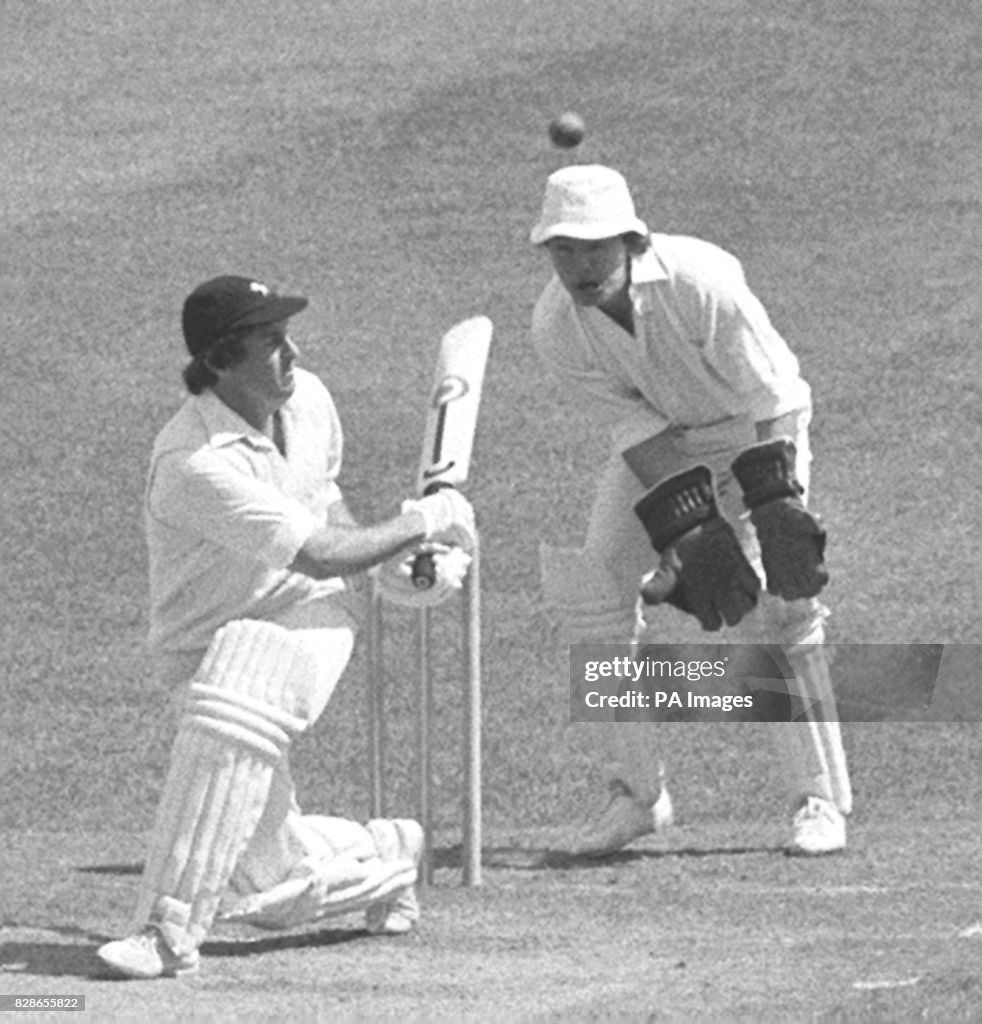
Bob Woolmer made his mark in county cricket with Kent, shining as a versatile all-rounder. His transition to Test cricket for England began in 1975.
Initially, he showcased his prowess as an all-rounder, clinching a hat-trick for MCC against the Australians with his sharp fast-medium bowling.
However, after his debut Test, selectors dropped him, only to recall Woolmer for the series finale at The Oval.
There, he amazed everyone by scoring 149 runs, crafting the slowest Test century by an Englishman against Australia at that time.
Dominating the Pitch: Woolmer’s Peak Years
His bat spoke loudly in the following seasons, especially against Australia, where Woolmer notched up two more centuries in 1977.
Remarkably, he achieved all his Test centuries against the Aussies, a feat uncommon for English cricketers post-World War II. Concurrently, Woolmer was a steadfast presence in England’s ODI team from 1972 to 1976.
Challenges and Triumphs: County Cricket and Beyond
Despite his success, Woolmer’s international trajectory hit a snag upon joining the Kerry Packer-led World Series break-away group.
Even so, he continued to excel with Kent, leading them to victory in the County Championship and the Benson and Hedges Cup in 1978. His stellar performance in the latter’s final won him the man of the match award.
Though Woolmer made a comeback to the Test scene between 1980 and 1981 after the World Series Cricket saga concluded, he struggled to replicate his mid-70s form.
A Controversial Decision: The Rebel Tour’s Impact
Woolmer’s decision to partake in the first rebel tour of South Africa in 1982 stirred controversy, effectively putting an end to his international cricket career.
Despite this, his contributions to the sport, particularly against Australia, remain unforgettable chapters in cricket history.
Celebrating Bob Woolmer: A Legacy Honored
- In 1976, cricket luminaries recognized Bob Woolmer as one of the year’s five outstanding cricketers.
- Additionally, his hometown honors him with Woolmer Street, a tribute near Kanpur’s Green Park stadium.
- Pakistan posthumously awarded him the prestigious Sitara-e-Imtiaz for his immense contributions to their cricket scene.
- Lahore boasts the Bob Woolmer National Indoor Cricket Academy, a testament to his enduring influence.
Bob Woolmer’s Coaching Career
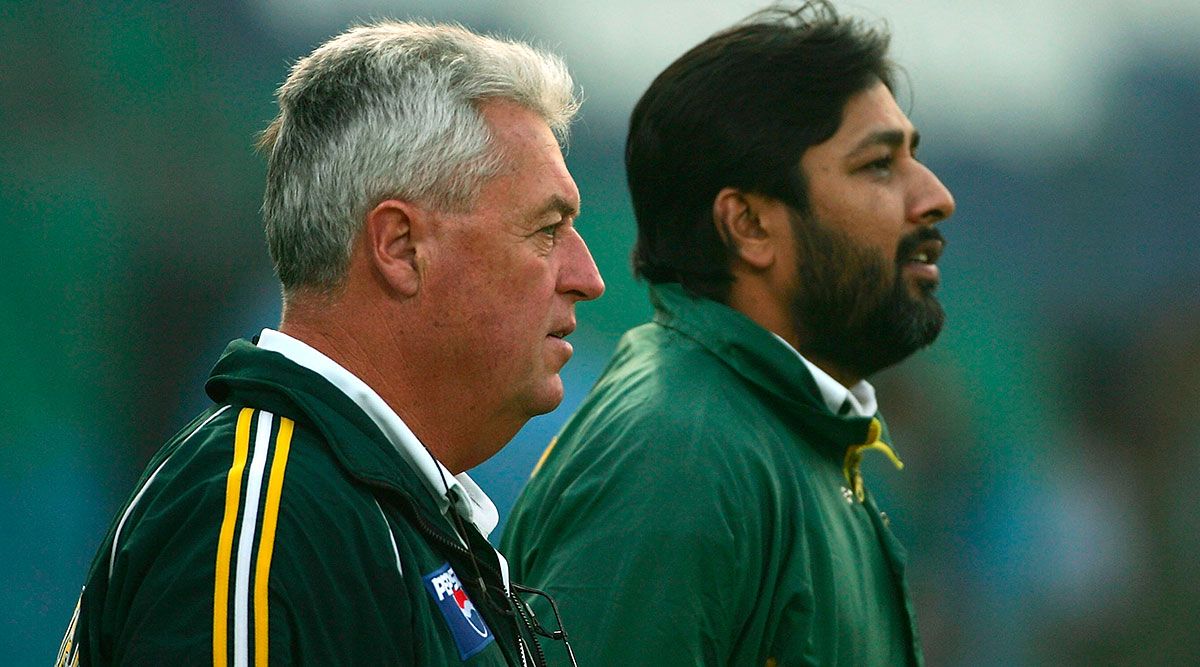
A New Chapter in South Africa
Bob Woolmer earned his coaching stripes in 1968, soon embarking on a transformative journey. After hanging up his cricket gear in 1984, he set sail for South Africa.
There, Woolmer took the helm at high schools, coaching cricket and hockey with a passion. Opting for an inclusive approach, he joined the Avendale Cricket Club, a ‘coloured’ club, breaking the norms of apartheid South Africa.
His impact was profound, inspiring growth and success within the club. Woolmer’s legacy lives on, with an annual exchange for a talented Avendale cricketer to experience summer at Lord Wandsworth College in Hampshire.
His leadership skills shone brightly as South Africa clinched the 1998 ICC KnockOut Trophy and a Commonwealth Games gold medal.
Return and Triumphs in England
Woolmer’s coaching journey took him back to England in 1987, where he led Kent’s second eleven with determination.
His coaching prowess was undeniable, steering Warwickshire to multiple victories in the early ’90s. Under his guidance, the team celebrated Natwest Trophy and County Championship triumphs.
Notably, Woolmer witnessed cricketing history, being present for both Brian Lara’s and Hanif Mohammad’s record-breaking innings.
Revolutionary Coaching Techniques
Renowned for his innovative methods, Woolmer transformed cricket coaching. He popularized the reverse sweep in the ’90s and pioneered the use of computer analysis in the sport.
His forward-thinking approach extended to adapting goalkeeper techniques for wicketkeepers.
Woolmer’s groundbreaking use of in-match communication via an earpiece during the 1999 World Cup, although later banned, underscored his innovative spirit.
Resilience with South Africa
Appointed as South Africa’s coach in 1994, Woolmer faced initial setbacks. Despite a rocky start in Pakistan, his tenure saw South Africa dominating in Tests and ODIs.
Under his leadership, the team’s performance was stellar, although World Cup victories remained elusive. The 1996 and 1999 World Cups were heartbreaks, with high-pressure matches revealing vulnerabilities.
Despite these challenges, Woolmer’s coaching brilliance was unmistakable, shaping a formidable South African squad.
Advocacy and Integrity
After a brief hiatus, Woolmer returned to Warwickshire, advocating for fairness and integrity in cricket.
His defense of Hansie Cronje, amidst match-fixing allegations, showcased his commitment to justice and rehabilitation in the sport.
Woolmer’s contributions extended beyond coaching, as he assisted the ICC in developing cricket globally.
Transformative Era with Pakistan
In 2004, Woolmer took the reins of the Pakistan cricket team, ushering in a period of resurgence. Following a series defeat to India, his leadership revitalized the team, achieving remarkable victories, including a notable series win in India.
Woolmer’s tenure was marked by success against England and Sri Lanka, though controversies such as the 2006 ball-tampering allegation tested his resolve.
Advocating for a change in ball-tampering laws, Woolmer’s views sparked debate, highlighting his influence and forward-thinking in cricket.
The Mysterious End: Bob Woolmer’s Final Chapter
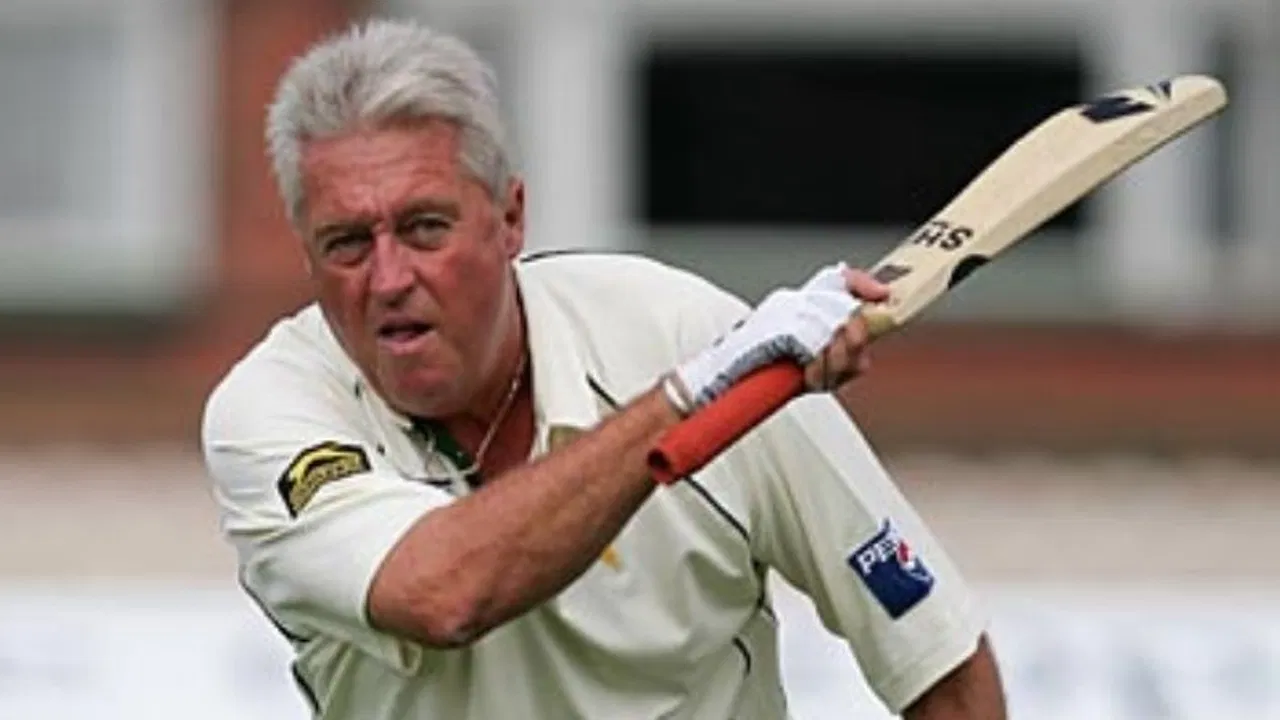
On 18 March 2007, the cricket world shook when Bob Woolmer was found lifeless in his Jamaica hotel room. Initially, heart failure seemed the cause.
Yet, four days later, Jamaican police, spurred by Dr. Ere Seshaiah’s findings, suspected foul play, hinting at manual strangulation. Deputy Commissioner Mark Shields took the lead in this high-profile case.
Fast forward to June 12, three independent pathologists, alongside Metropolitan Police experts, overturned the murder theory, citing natural causes instead.
Despite these conclusions, health issues like an enlarged heart and diabetes were underlined as contributing factors. Still, discrepancies in forensic analyses led coroner Patrick Murphy to demand more tests in November.
The inquest, after twenty-six grueling days of evidence, concluded without a definitive answer, leaving the strangulation theory on the table.
Amidst swirling rumors, cricket legends like Clive Rice and Ian Chappell cast doubt on the natural death conclusion, suggesting darker forces at play.
In 2010, academic circles linked the media frenzy around Woolmer’s demise to wider societal biases, adding another layer to the ongoing mystery.
This story remains a testament to the unpredictability and intrigue surrounding the sport and its personalities.
Frequently Asked Questions (FAQs)
What were Bob Woolmer's major contributions to cricket?
Woolmer’s impact on cricket was monumental. He was a talented player for Kent and England, and later, as a coach, introduced innovative techniques such as computer analysis and the reverse sweep. His coaching led South Africa and Pakistan to significant victories, showcasing his strategic genius.
How did Bob Woolmer's coaching change cricket?
Woolmer’s coaching philosophy brought a technological and strategic revolution to cricket. He was among the first to utilize computer analysis to improve player performance and match strategies. Additionally, his open-minded approach to training methods from other sports enriched cricket’s traditional coaching methodologies.
What circumstances surrounded Bob Woolmer's death?
Woolmer’s death in 2007 during the Cricket World Cup in Jamaica was initially suspected to be a murder based on manual strangulation. However, after extensive investigations and multiple pathologists’ reports, his death was attributed to natural causes, despite remaining controversies and speculative theories.


